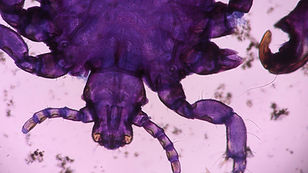Peer-Reviewed A.I. in Vet Med


Important - before you start reading the papers:
Just as peer reviewed medicine ensures reliability in veterinary publications, it’s essential for artificial intelligence models to also undergo similar scrutiny before they are integrated into practice. Be aware that the current landscape of artificial intelligence regulation is sparse and fragmented--even for some of the models that are making it into our practices. Because of this, like any other facet of medicine, it's important to understand the science behind what you're using and use these technologies responsibly.
To understand the reliability of the artificial intelligence you're using, you need to understand how A.I. models are created, including the stages of the development pipeline. Spoiler alert: If you assume the "end" of the development pipeline is the veterinary A.I. technology that exists within your practice, you're going to be sorely disappointed, or perhaps terrified, like I was when I learned how "not close to the end" most A.I. that we commonly use is - not just veterinary options.
For an introduction to artificial intelligence models, pipelines, and how to critique publications, go to this blog.
Peer-Reviewed A.I. Papers in Vet Med
Cardiology
2024
Valente, C., Wodzinski, M., Guglielmini, C., Poser, H., Chiavegato, D., Zotti, A., Venturini, R., & Banzato, T. (2024). Development of an artificial intelligence-based algorithm for predicting the severity of myxomatous mitral valve disease from thoracic radiographs by using two grading systems. Research in Veterinary Science, 178, 105377- https://doi.org/10.1016/j.rvsc.2024.105377
2020
Li, S., Wang, Z., Visser, L. C., Wisner, E. R., & Cheng, H. (2020). Pilot study: Application of artificial intelligence for detecting left atrial enlargement on canine thoracic radiographs. Veterinary Radiology & Ultrasound, 61(6), 611–618. https://doi.org/10.1111/vru.12901
Internal Medicine
(Large Animal)
2022
Liu, K., Liu, L., Tai, M., Ding, Q., Yao, W., & Shen, M. (2022). Light from heat lamps affects sow behaviour and piglet salivary melatonin levels. Animal : an international journal of animal bioscience, 16(6), 100534. https://doi.org/10.1016/j.animal.2022.100534
2022
Teixeira, V. A., Lana, A. M. Q., Bresolin, T., Tomich, T. R., Souza, G. M., Furlong, J., Rodrigues, J. P. P., Coelho, S. G., Gonçalves, L. C., Silveira, J. A. G., Ferreira, L. D., Facury Filho, E. J., Campos, M. M., Dorea, J. R. R., & Pereira, L. G. R. (2022). Using rumination and activity data for early detection of anaplasmosis disease in dairy heifer calves. Journal of dairy science, 105(5), 4421–4433. https://doi.org/10.3168/jds.2021-20952
Internal Medicine
(Small Animal)
2023
Patkar, S., Mannheimer, J., Harmon, S. A., Ramirez, C. J., Mazcko, C. N., Choyke, P. L., Brown, G. T., Turkbey, B., LeBlanc, A. K., & Beck, J. A. (2024). Large-Scale Comparative Analysis of Canine and Human Osteosarcomas Uncovers Conserved Clinically Relevant Tumor Microenvironment Subtypes. Clinical cancer research : an official journal of the American Association for Cancer Research, 30(24), 5630–5642. https://doi.org/10.1158/1078-0432.CCR-24-1854
Oncology
2024
Patkar, S., Mannheimer, J., Harmon, S. A., Ramirez, C. J., Mazcko, C. N., Choyke, P. L., Brown, G. T., Turkbey, B., LeBlanc, A. K., & Beck, J. A. (2024). Large-Scale Comparative Analysis of Canine and Human Osteosarcomas Uncovers Conserved Clinically Relevant Tumor Microenvironment Subtypes. Clinical cancer research : an official journal of the American Association for Cancer Research, 30(24), 5630–5642. https://doi.org/10.1158/1078-0432.CCR-24-1854
2023
Wang, S., Pang, X., de Keyzer, F., Feng, Y., Swinnen, J. V., Yu, J., & Ni, Y. (2023). AI-based MRI auto-segmentation of brain tumor in rodents, a multicenter study. Acta neuropathologica communications, 11(1), 11. https://doi.org/10.1186/s40478-023-01509-w
Ophthalmology
2011
Wang, Q., Grozdanic, S. D., Harper, M. M., Hamouche, N., Kecova, H., Lazic, T., & Yu, C. (2011). Exploring Raman spectroscopy for the evaluation of glaucomatous retinal changes. Journal of biomedical optics, 16(10), 107006. https://doi.org/10.1117/1.3642010
Parasitology
2024
Nagamori, Y., Scimeca, R., Hall-Sedlak, R., Blagburn, B., Starkey, L. A., Bowman, D. D., Lucio-Forster, A., Little, S. E., Cree, T., Loenser, M., Larson, B. S., Penn, C., Rhodes, A., & Goldstein, R. (2024). Multicenter evaluation of the Vetscan Imagyst system using Ocus 40 and EasyScan One scanners to detect gastrointestinal parasites in feces of dogs and cats. Journal of veterinary diagnostic investigation : official publication of the American Association of Veterinary Laboratory Diagnosticians, Inc, 36(1), 32–40. https://doi.org/10.1177/10406387231216185
2024
Steuer, A., Fritzler, J., Boggan, S., Daniel, I., Cowles, B., Penn, C., Goldstein, R., & Lin, D. (2024). Validation of Vetscan Imagyst®, a diagnostic test utilizing an artificial intelligence deep learning algorithm, for detecting strongyles and Parascaris spp. in equine fecal samples. Parasites & vectors, 17(1), 465. https://doi.org/10.1186/s13071-024-06525-w
Pathology
2024
Pihlman, H., Linden, J., Paakinaho, K., Hannula, M., Morelius, M., Manninen, M., Laitinen-Vapaavuori, O., & Keränen, P. (2024). Long-term comparison of two β-TCP/PLCL composite scaffolds in rabbit calvarial defects. Journal of applied biomaterials & functional materials, 22, 22808000241299587. https://doi.org/10.1177/22808000241299587
2006
Price, J. R., Aykac, D., & Wall, J. (2006). A 3D level sets method for segmenting the mouse spleen and follicles in volumetric microCT images. Conference proceedings : ... Annual International Conference of the IEEE Engineering in Medicine and Biology Society. IEEE Engineering in Medicine and Biology Society. Annual Conference, 2006, 2332–2336. https://doi.org/10.1109/IEMBS.2006.260127
Radiology
2023
Wang, S., Pang, X., de Keyzer, F., Feng, Y., Swinnen, J. V., Yu, J., & Ni, Y. (2023). AI-based MRI auto-segmentation of brain tumor in rodents, a multicenter study. Acta neuropathologica communications, 11(1), 11. https://doi.org/10.1186/s40478-023-01509-w
2020
Boissady, E., de La Comble, A., Zhu, X., & Hespel, A. M. (2020). Artificial intelligence evaluating primary thoracic lesions has an overall lower error rate compared to veterinarians or veterinarians in conjunction with the artificial intelligence. Veterinary radiology & ultrasound : the official journal of the American College of Veterinary Radiology and the International Veterinary Radiology Association, 61(6), 619–627. https://doi.org/10.1111/vru.12912
2008
Li, X., Yankeelov, T. E., Peterson, T. E., Gore, J. C., & Dawant, B. M. (2008). Automatic nonrigid registration of whole body CT mice images. Medical physics, 35(4), 1507–1520. https://doi.org/10.1118/1.2889758
*Not technically AI, but laying the groundwork
2022
Adrien-Maxence, H., Emilie, B., Alois, C., Michelle, A., Kate, A., Mylene, A., David, B., Marie, S., Jason, F., Eric, G., Séamus, H., Kevin, K., Alison, L., Megan, M., Hester, M., Jaime, R. J., Zhu, X., Micaela, Z., & Federica, M. (2022). Comparison of error rates between four pretrained DenseNet convolutional neural network models and 13 board-certified veterinary radiologists when evaluating 15 labels of canine thoracic radiographs. Veterinary radiology & ultrasound : the official journal of the American College of Veterinary Radiology and the International Veterinary Radiology Association, 63(4), 456–468. https://doi.org/10.1111/vru.13069
2013
McEvoy, F. J., & Amigo, J. M. (2013). Using machine learning to classify image features from canine pelvic radiographs: evaluation of partial least squares discriminant analysis and artificial neural network models. Veterinary radiology & ultrasound : the official journal of the American College of Veterinary Radiology and the International Veterinary Radiology Association, 54(2), 122–126. https://doi.org/10.1111/vru.12003
2008
Maroy, R., Boisgard, R., Comtat, C., Frouin, V., Cathier, P., Duchesnay, E., Dollé, F., Nielsen, P. E., Trébossen, R., & Tavitian, B. (2008). Segmentation of rodent whole-body dynamic PET images: an unsupervised method based on voxel dynamics. IEEE transactions on medical imaging, 27(3), 342–354. https://doi.org/10.1109/TMI.2007.905106
*Not technically AI, but laying the groundwork
Theriogenology
1992
.png)








